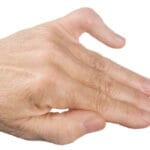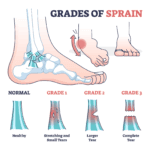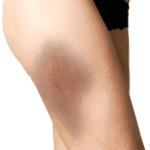7 tricks to try to ease the tingling pain
Does the thumb side of your hand feel like it’s going to sleep — that weak, numb, pins-and-needles feeling — for no apparent reason? You may suspect that you have carpal tunnel syndrome.
The good news is that there are several methods you can try at home to ease your pain. And if those don’t work, surgery can be a highly effective treatment.
What is carpal tunnel syndrome?
Carpal tunnel syndrome is a fairly common condition that affects your hand and wrist, says Dr. Seitz.
Carpal tunnel syndrome happens when the median nerve, which runs from your forearm to your hand through a narrow space called the carpal tunnel, is compressed or pincheds.
Symptoms include numbness, tingling and pain, usually in your thumb and the first three fingers of your hand.
Nine tendons that flex the first three fingers and thumb also run through your carpal tunnel. Anything that makes the carpal tunnel smaller — and pinches the median nerve — can result in carpal tunnel syndrome.
Home remedies for carpal tunnel relief
While carpal tunnel syndrome can be uncomfortable or painful, you can treat it at home. The first step to take is to stop the activity that is causing the compression.
“Think about the activities that you think might be causing numbness and pain in your wrist and try to stop or reduce them. You can resume the activity when your symptoms improve.
Here are five ways you can treat your carpal tunnel syndrome at home.
1. Ice it down
Ice your wrist or soak it in an ice bath for 10 minutes to 15 minutes once or twice an hour. The cold should help ease the pain, at least temporarily, in your wrist. It also keeps swelling of the affected tendons down.
2. Wrist splints
Buy a wrist splint to keep your hand properly aligned. It may help to wear the splint at night to keep you from flexing or overextending your wrist while you sleep.
3. Shake it off (gently)
Relieve nighttime pain by gently shaking your hand and wrist or hanging your hand over the side of the bed. This can relieve pressure on the median. Other exercises, especially when combined with a splint, can have a similar effect.
4. Pain relievers
Take a nonsteroidal anti-inflammatory drug (NSAID), such as ibuprofen or naproxen to relieve pain. Take NSAIDs with food and after consulting your primary care physician to make sure there are no medical reasons — such as interaction with other medicines you may be taking — to avoid these pain relievers.
5. Warm water treatment
Immerse your hand in warm water — with a temperature between 92 degrees Fahrenheit and 100 degrees Fahrenheit (33 degrees Celsius and 37 degrees Celsius) — and gently move or flex your hand and wrist. Do this three to four times a day.
6. Ergonomic changes
You can also try some changes to your work environment if you do a lot of sitting and typing at a desk, including:
- Adjusting your chair height.
- Changing the position of your keyboard.
- Changing your hand and wrist positions.
These changes can help take pressure off your median nerve and tendons, providing at least temporary relief.
7. Cortisone shots
Injections of corticosteroids – a type of anti-inflammatory drug – can bring pain relief to those with carpal tunnel syndrome. Just as with other treatments, cortisone shots reduce inflammation of the tendons around the median nerve, easing pain.
When to consider surgery
If these home treatments don’t ease your pain in one or two weeks, it might be time to see an orthopedic physician, who specializes in the treatment of bones, joints and muscles. More intensive treatments might be suggested and your healthcare provider may also look for other conditions that can be affected by carpal tunnel syndrome.
that patients with carpal tunnel syndrome who may also have amyloidosis, a protein disorder, could be at risk for congestive heart failure. In this case, a biopsy can be performed during carpal tunnel surgery to test for amyloidosis.
“Your healthcare provider may recommend surgery if there’s severe damage to your median nerve or to prevent permanent sensory or functional loss.
Surgery for carpal tunnel syndrome involves cutting the ligament at the base of your palm that covers the carpal tunnel. This procedure increases the size of the carpel tunnel, taking pressure off both your median nerve and your tendons.





